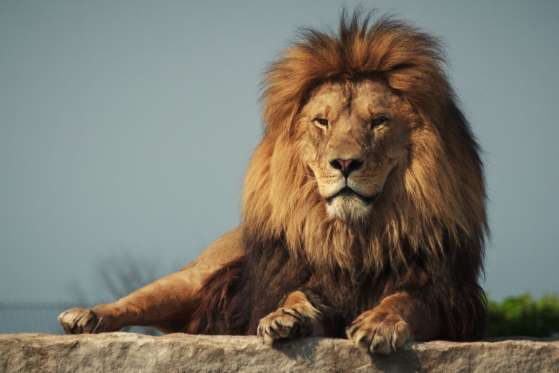July 28, 2015
ZIMBABWE – Conservationists and politicians have called on the EU to ban the import of lion heads, paws and skins as hunters’ trophies from African countries that cannot prove their lion populations are sustainable, following the killing of Zimbabwe’s most famous lion by a European hunter with a bow and arrow.

July 28, 2015
ZIMBABWE – Conservationists and politicians have called on the EU to ban the import of lion heads, paws and skins as hunters’ trophies from African countries that cannot prove their lion populations are sustainable, following the killing of Zimbabwe’s most famous lion by a European hunter with a bow and arrow.

The death of a radio-tagged lion called Cecil in Hwange national park was described as a tragedy by wildlife groups and has led Zimbabwean authorities to attempt to track down the big cat’s hunter, who is believed to be Spanish.
But the lion, whose head and skin were removed, is only one of about 200 such lion ‘trophies’ that hunters legally import to the EU each year. Germany, France and Spain are the biggest importers.
In February, scientific advisers to the EU banned imports from Benin, Burkina Faso and Cameroon for the first time, on the grounds that their wild lion populations were not sustainable.
Lions were classed as vulnerable on the latest update to the International Union for the Conservation of Nature’s red list of endangered species, and critically endangered in western Africa due to over-hunting and a scarcity of prey.
MEPs said the Cecil incident showed that if hunters were desperate enough to lure lions out of national parks with bait rather than killing them in areas with a hunting quota, lion populations in Zimbabwe were clearly not sustainable.
They said the EU’s import ban should be extended to any African countries without independent, scientific data to show that lion hunting is sustainable.
Catherine Bearder, a Liberal Democrat MEP who on Monday submitted a written question to the European Commission on the issue, said: “The shooting of Cecil the lion was tragic and cruel, but it has at least shone a spotlight on the absurdity of the current situation. Despite the number of lions across Africa plummeting in recent years, hunters are still allowed to import lion hunting trophies into the EU from several African countries.”
Keith Taylor, Green party MEP for south-east England, said he supported Bearder’s call for action.
“It’s outrageous that lions are being killed just so someone in Europe can decorate their home with the body parts. The European commission must immediately impose an EU ban on all imports of lion body parts,” he said.
A group of experts known as the Scientific Review Group (SRG) makes decisions on whether countries should be blacklisted or not. Zimbabwe – along with Namibia, Tanzania and South Africa – is listed as ‘positive’, ie with a sustainable enough population of lions to accommodate hunting.
A trophy display at a taxidermy workshop in Namibia where Hunters from Europe and North America take their ‘kills’ to stuff them.
Dr Peter Kat, a trustee at the UK-based charity Lionaid, said without the SRG having access to more data, there should be a temporary ban.
“What we need is independent lion counts in various countries where we are now allowing imports. Until and unless those counts are produced, then there is a moratorium. At the moment, it’s ‘show us that it is unsustainable’ [a country’s lion population for hunting]. Now we need the reverse: show us that it is sustainable.”
Both Bearder and Kat said that when the SRG meets in September, it should ban imports from Zimbabwe.
The Zimbabwe Professional Hunters and Guides Association confirmed on its Facebook page that it had suspended the membership of one of the professional guides who had assisted the hunter.
Cecil was a 13-year-old lion with a distinctive black mane, and was reportedly lured out of the national park with bait earlier this month, before being killed with a bow and arrow and rifle, before being skinned and beheaded. Kat said that such baiting was legal in Zimbabwe, even on the edge of a national park, but it appeared the hunter had broken the law by killing the lion in an area without a hunting quota.
CNN reported that the lion’s head and skin have subsequently been found and would be used as evidence.
Courtesy: The Guardian
















































































































